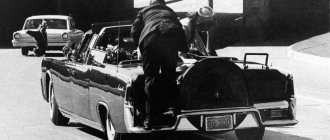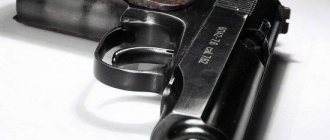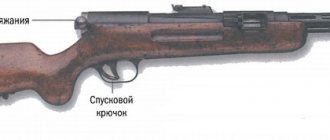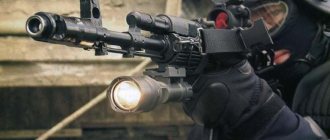No matter how they call the assassination of the 35th US President John F. Kennedy - both the biggest mystery of the 20th century and a conspiracy of the CIA and the FBI; There are dozens of different versions of who exactly shot in Dallas. There is still no final opinion about the identity of the killer.
But the chronicle of the crime is known literally minute by minute. Not only do we know exactly what happened in Dallas on November 22, 1963, but we can see it. Businessman Abraham Zapruder decided to film the passage of the presidential motorcade with a film camera, and ended up filming the murder. So the attempt was documented, and the film was immediately handed over to the special services. We will restore the picture too.
Jacqueline Kennedy and one of the president's guards immediately after the shot. Source: gazeta.ru
President's visit
So, in November 1963, Kennedy arrived in Texas. This trip was planned as part of the preparatory campaign for the 1964 presidential elections. The head of state himself noted that it was very important for him to win in Texas and Florida. In addition, Vice President Lyndon Johnson was a local native, and a trip to this state was given special significance.
But representatives of the special services were afraid of the visit. Literally a month before the president’s arrival, the US representative to the UN, Adlai Stevenson, was attacked in Dallas. Earlier, during one of Lyndon Johnson's speeches here, he was booed by a crowd of... housewives. On the eve of the president's arrival, leaflets with Kennedy's image and the words "Wanted for Treason" were posted around the city. The situation was tense, and trouble was expected. True, they thought that demonstrators would take to the streets with posters or throw rotten eggs at the president, nothing more.
Flyers posted in Dallas ahead of President Kennedy's visit. Source: rulit.me
Local authorities were more pessimistic. This is what William Manchester, a historian and journalist who wrote a chronicle of the assassination attempt at the request of the president’s family, writes in his book “The Assassination of President Kennedy”: “Federal Judge Sarah T. Hughes feared the incidents, prosecutor Barefoot Sanders, the senior-ranking Justice Department official in this part of Texas and the vice president's representative in Dallas, told Johnson's political adviser Cliff Carter that, given the political atmosphere in the city, a trip there seemed "inadvisable." City officials have been trembling in their knees since the very beginning of this trip. The wave of local hostility toward the federal government was reaching a breaking point, and they knew it.”
But the election campaign was approaching, and the presidential travel plan was not changed. On November 21, the presidential plane landed at San Antonio Airport (the second most populous city in Texas). Kennedy attended the Air Force Medical School, visited Houston, spoke at the university there, and attended a Democratic Party banquet.
The next day the President went to Dallas. With a difference of 5 minutes, first the vice president's plane arrived at Dallas Love Field airport, and then Kennedy. At approximately 11:50, the cortege of top officials moved towards the city. The Kennedys were in the limousine, which was fourth. In the same car with the President and First Lady were US Secret Service agent Roy Kellerman, Texas Governor John Connally and his wife, and agent William Greer was driving.
Silent PSS-2
The PSS-2 system pistol is a unique example of the Russian armed forces. It has no domestic analogues. The PSS-2 fires innovative silent cartridges: the SP-16 cartridge is equipped with a special bolt that levels out the sound wave when fired.
Expert opinion
Expert Daniil Rodionov
historian, USSR State Prize laureate, Doctor of Historical Sciences
The sound remains “locked” in the spent cartridge due to gas cutoff.
Of the obvious disadvantages, it was noted that only SP-16 cartridges are suitable for pistol shooting, which elevates the PSS-2 to the ranks of highly specialized weapons.
Three shots
Initially, it was planned that the motorcade would go straight along Main Street - there was no need to slow down on it. But for some reason the route was changed, and the cars drove along Elm Street, where cars had to slow down. In addition, on Elm Street, the motorcade was closer to the educational literature warehouse, from where the shooting took place.
Kennedy's motorcade movement diagram. Source: libmir.com
The shots rang out at 12:30. Eyewitnesses mistook them either for the cracks of a firecracker, or for the sound of an exhaust; even the special agents did not immediately get their bearings. There were three shots in total (although even this is controversial), Kennedy was hit in the back first, the second bullet hit him in the head, and this wound became fatal. Six minutes later the motorcade arrived at the nearest hospital, and at 12:40 the president died.
The required forensic medical studies that should have been done on site were not carried out. Kennedy's body was immediately sent to Washington.
Employees of the educational literature warehouse told police that the shots were fired from their building. Based on a series of statements, an hour later, Officer Tippit attempted to detain warehouse worker Lee Harvey Oswald. He had the pistol with which he shot Tippit. As a result, Oswald was captured, but two days later he also died. He was shot by a certain Jack Ruby while the suspect was being taken out of the police station. In this way he wanted to “justify” his hometown.
Jack Ruby. Source: gazeta.ru
So, by November 24, the president was killed, and so was the main suspect. Nevertheless, in accordance with the decree of the new President Lyndon Johnson, a commission was formed, headed by Chief Justice of the US Supreme Court Earl Warren. There were seven people in total. For a long time they studied the testimony of witnesses and documents, and eventually concluded that a lone killer had attempted to assassinate the president. Jack Ruby, in their opinion, also acted alone and had purely personal motives for the murder.
Army pistol in Russia. Part 2
After the failure with the P-96 pistol, the Tula State Unitary Enterprise "KBP" thoroughly redesigned the design of a promising army pistol, introducing the GSh-18 pistol in the early 2000s.
During development, various methods of locking the barrel were considered - with a swinging wedge, as in the German Walther P38 pistol, and with an earring, as in the TT pistol. In the final version, neither the first nor the second option was approved, and a locking scheme was implemented by rotating the barrel due to the interaction of the protrusion on the breech of the barrel with the groove of the pistol frame liner.
The barrel is engaged with the bolt by ten stops located in the front part, with a coupling fixedly fixed in the bolt. When locked, the barrel rotates 18 degrees (the P-96 had one stop and a rotation of 30 degrees.
The trigger mechanism (trigger mechanism) of the GSh-18 pistol is conceptually similar to the trigger mechanism of the Austrian Glock pistol - striker-fired, with an automatic safety on the trigger (the "Sport" version does not have an automatic safety on the trigger). When pressed, the trigger moves straight (trigger), reminiscent of the trigger on a TT pistol.
(currently JSC KBP) often contrasted the GSh-18 with the Glock-17 pistol, pointing to a smaller number of parts and weight, the ability to work in contaminated conditions and technological simplicity of production.
Design and principle of operation of the GSh-18 pistol
Unfortunately, in a real comparison, everything is not so rosy. Personal experience, albeit small, shows that shooting from a Glock-17 pistol is much more comfortable compared to shooting from a GSh-18 (GSh-18 in a sports modification). The disadvantages of the latter include the higher complexity of loading the magazine, a less comfortable release, and less convenience in pulling the bolt due to the small area of the side edges (it slips). When fired, the cartridge case does not fly to the side, but vertically upward, trying to hit the head or the collar, which also does not add to the comfort of shooting.
The overall workmanship of the GSh-18 pistol is much worse than that of the Glock-17. According to the shooting range instructor, after 10,000 rounds (with sports cartridges, not armor-piercing 7N31), the GSh-18 must be sent to the factory for restoration. The Glock-17 can easily withstand more than 100,000 rounds (and sometimes 200,000 rounds).
The GSh-18 pistol and its counterpart, the fifth-generation Glock-17 (images may not be to scale)
Formally, the GSh-18 was adopted by the RF Armed Forces and the RF Ministry of Internal Affairs, but in fact purchases were made in minimal quantities.
There is enough material on the Internet that claims that Glock pistols are not suitable for arming the army, since they can fail if contaminated. But personally, I would prefer a gun that, although it may stop working when dirty, is guaranteed to work reliably under normal conditions, than a gun that can fail at any time due to disgusting workmanship, even if there is a theoretical possibility of working in dirt.
However, work on fine-tuning the pistol is slowly progressing, as can be judged by the appearance on the manufacturer’s website of a photograph of the updated version of the GSh-18. Let's hope that, although small, but a real market for sporting weapons will force the manufacturer to pay attention to his brainchild, bring it to mind and solve the problems of production quality.
It would not be amiss to create the GSh-18 in a version chambered for .40 S&W and to create a compact modification modeled on the Glock-26/27 pistols.
Image of the extreme version of GSh-18 from the manufacturer’s website
Of course, the Izhevsk Mechanical Plant could not stay away from the topic of developing an army pistol. In 1993, as part of the R&D “Grach”, a pistol designed by Yarygin (PY) with the same name “Grach” was presented.
The Yarygin pistol has a classic design based on a short recoil of the barrel and its rigid locking with a distortion in the vertical plane. Locking is carried out by a protrusion in the breech of the barrel behind the window for ejecting cartridges in the bolt.
The bolt and frame of the pistol are made of steel. The Yarygin pistol uses a double-action trigger with an open trigger. The non-automatic safety is double-sided, located on the frame, and when turned on, blocks the trigger, sear and bolt; the trigger, when the safety is on, can be blocked both in the cocked and deflated state. Magazine capacity 17 rounds.
The design and principle of operation of the Yarygin pistol
Formally, Yarygin’s 9-mm pistol was recognized as the winner and adopted by the Russian Armed Forces. Subsequently, the pistol began to be purchased not only by the Armed Forces, but also by other Russian law enforcement agencies.
The Yarygin pistol, like its fellow competitor for the competition, the GSh-18 pistol, is plagued by manufacturing quality problems. The pistol turned out to be quite bulky and heavy; carrying it on a regular basis after PM may seem inconvenient.
Pistol Yarygin MP443
Based on the Yarygin pistol, several variants of civilian pistols were developed - MP-445 "Varyag" and MP-446 "Viking".
During the same period, the MP-444 Bagheera pistol was developed for 9 mm cartridges: 9x17K, 9x18PM and 9x19 Parabellum.
The frame of the Bagheera pistol is made of high-strength injection molded thermoplastic, and stamped front and rear guides are integrated into it. When unlocking and locking, the barrel moves due to the interaction of the bevel on the lower protrusion of the barrel with the bevel on the base of the return-buffer mechanism. The return-buffer mechanism provides shock absorption of the barrel and bolt in the rearmost position
This pistol uses the original trigger. On the one hand, it is striker-type, but at the same time there is a special hammer cocker, reminiscent of a trigger, which allows the shooter to cock the striker manually and thus fire both self-cocking and with a pre-cocked striker.
The MP-444 Bagheera pistol remained a prototype.
Pistol MP-444 "Bagheera"
Another MP-445 “Varyag” pistol, the design of which is based on the Yarygin pistol, also remained a prototype. The MP-445 "Varyag" pistol was intended for the civilian market and was to be produced in 9x19 and .40 S&W calibers in full-size and compact versions. The body of the MP-445 is made of polymer; the pistol is structurally similar to the MP-443.
Pistol MP-445 "Varyag"
The most successful modification of Yarygin’s pistol was the MP-446 “Viking” pistol, which essentially differed from its combat prototype in the material of the frame. For MP-443 it is made of steel, for MP-446 the frame is made of high-strength polymer.
It was this pistol that began to be purchased in large quantities by shooting ranges and “practicing” athletes. First of all, this was facilitated by the minimum cost of the MP-446 - from 20,000 rubles at present. The low price makes users blind to numerous operational problems of the Viking, especially during the initial release period.
During shooting training with the MP-446 Viking pistol, I shot several thousand rounds of ammunition. During all this time, when shooting from a pistol owned by a shooting organization (i.e., used by many people), with cartridges of not the highest quality, there were only a few delays/distortions. A partner once had a malfunction in the same pistol, which required repair. Personally, the gun seems uncomfortable at first; the handle is a bit large for shooters with small hands, but then you get used to it. For pistols of early releases, the magazines were often incompatible (the magazine from one pistol did not fit another and vice versa).
Shooters who engage in practical shooting professionally, over time, usually replace the MP-446 with foreign models, for example, the Czech CZ or the Austrian Glock.
However, competition in the market for sporting short-barreled weapons is forcing the Izhevsk Mechanical Plant, part of the Kalashnikov concern, to develop its brainchild. In 2016, an improved model was presented - the Viking-M pistol with the service life of the main parts increased to 50,000 shots.
A large notch has appeared on the bolt, including in the front part of the bolt, and a Picatinny rail has been added for mounting additional accessories. Thanks to the weighting in the front part of the pistol frame, as well as the elongated and thickened barrel, the balance of the pistol is improved and its toss up when firing is reduced. A new magazine with a single-row cartridge output was developed for the Viking-M pistol; however, the pistol is compatible with both types of magazines, both single-row and double-row cartridge output.
The modernization of the Viking pistol into Viking-M is very important, since the developments used in it can later be implemented in the design of the Yarygin MP-443 army pistol. There is no doubt that if the Kalashnikov concern had the need to compete in the relatively open market for sporting short-barreled guns, the modernization of the pistol, even if it had been carried out, would have been carried out at an order of magnitude slower, which once again emphasizes the importance of the civilian weapons market in the country.
I really want to hope that the country’s arms concerns will resist the temptation to use administrative measures to limit the access of foreign weapons to the domestic market. Although such a step will bring financial benefits in the short term, in the long term it will completely discourage them from developing and improving their products.
Pistols "Viking-M" (above) and "Viking" (below)
Presentation of the Viking-M pistol from the Kalashnikov concern
In 2012, information appeared in the media about another Russian Glock killer - the Strike One/Strizh pistol. The Deputy Prime Minister of the Russian Government, at that time it was D. O. Rogozin, said that the Swift pistol would be adopted and replace Makarov pistols and Yarygin pistols in the RF Armed Forces.
Later, representatives of the RF Armed Forces reported that the “Strizh” pistol was supposedly planned to be included in the “Ratnik” equipment in the future, but that will happen later, and for now the army will purchase “Gyurza” and PYa pistols. And a couple of months later they reported that the Swift pistol did not pass state tests and was rejected.
The lack of reliable data on the tests does not allow us to understand why exactly the Strizh pistol did not suit the military, and whether there are any “pitfalls” here, especially considering the fact that TsNIITochmash, where the tests were carried out, is itself a weapons manufacturer and lays claim to supply of army pistols to the Russian Armed Forces.
In general, given the fact that pistols are not an atomic bomb, and there can be nothing particularly secret about them, it is quite possible to publish videos of tests. If you, Russian developers, are confident that our pistols are many times superior to foreign ones when working in polluted conditions, then show this, you will receive additional competitive advantages, and taxpayers will be able to see that their money is not being spent in vain.
Returning to the Swift pistol. The developer and manufacturer of the pistol is the joint Russian-Italian company Arsenal Firearms. The gun itself is conceptually and visually reminiscent of the very Glock to which it is opposed.
A special feature of the Strizh pistol is the lower position of the barrel relative to the handle, which reduces the toss of the barrel when firing. The barrel of the pistol moves along the frame along guides, locking is carried out by a U-shaped insert movable in a vertical plane. The pistol uses a striker-type trigger, single action, with partial cocking of the striker.
Currently, the Swift pistol as such no longer exists, and, however, it most likely did not exist, but there was an Italian pistol “Strike One” hastily adapted for the Russian market.
Arsenal Firearms rebranded due to trademark disputes and became known as Archon Firearms in the United States. The Strike One pistol has also undergone design changes and is sold under the name Stryk B. In Russia, the Stryk B pistol can be purchased as a sporting weapon.
Pistols "Strike One" (left) and "Stryk B" (right)
The Strike One pistol with a body kit that turns it into a compact carbine
Once again, the topic of an army pistol surfaced in 2015, when the Kalashnikov concern presented the promising PL-14 pistol, developed by designer Dmitry Lebedev, which after modification was renamed PL-15.
The Lebedev PL-15 pistol uses automation using the recoil of the bolt coupled to the barrel with a short barrel stroke. Unlocking is carried out by lowering the breech of the barrel using a figured tide under the breech of the barrel. The barrel bore is locked by a protrusion in the upper part of the barrel beyond the window for ejecting cartridges.
The pistol frame is made of aluminum alloy; in the future it is planned to use a frame made of high-strength polymer; the maximum thickness of the handle is 28 mm. The trigger trigger trigger for the PL-15 pistol has a hidden hammer and inertial firing pin, double-action only (trigger force is 4 kg, trigger travel is 7 mm). There is a two-way manual safety.
A version of the PL-15-01 pistol has been developed, which has a single-action striker trigger, with reduced trigger force and trigger travel. A shortened version has also been developed - PL-15K.
At the end of 2022, the managing director of the Izhevsk Mechanical Plant, Alexander Gvozdika, announced that serial production of the PL-15 pistol would begin in 2022 using new technological equipment. The pistol will be produced for law enforcement agencies and for civilian (read sports) use. At the international arms exhibition IDEX, which was held in Abu Dhabi in February 2019, a sports version of the PL-15 pistol was presented - the SP1 pistol.
It would be extremely useful if, before being put into service, the PL-15 pistol was released in a sports version, and was “circulated” on the market for several years, so that all possible design flaws were revealed. No amount of testing can replace such experience; we can give an example from another area, when a seemingly repeatedly tested product, the Samsung Galaxy Note 7 smartphone, suddenly began to explode when it reached real users.
Pistols PL-15 and PL-15K
A supposed kit for the PL-15 pistol, allowing you to turn it into a carbine with an extended barrel (perhaps a figment of someone’s imagination)
Another potential contender for the title of army pistol is the self-loading pistol “Boa”, developed by TsNIITochmash. The first information about this pistol appeared back in 2016, but people started actively talking about this pistol in 2022, due to the end of state tests.
The “Udav” pistol is designed to replace the Serdyukov SPS self-loading pistol (SR-1M, “Gyurza/Vector”) and uses the same 9x21 caliber ammunition. Due to the fact that the 9x21 cartridge is used mainly by special units, it is incorrect to say that the Boa constrictor pistol will become the main army pistol; rather, it, like the Gyurza, will be purchased in limited quantities. And to talk about replacing the Makarov pistol with this pistol in the Ministry of Internal Affairs is at least strange.
The Boa constrictor pistol has a classic design using the recoil energy of the barrel during its short stroke. The coupling of the barrel and the bolt is carried out by a protrusion in the breech of the barrel with a window for ejecting cartridges; disengagement occurs when the figured cutout under the barrel interacts with the elements of the frame. The frame is made of polymer with steel load-bearing elements.
The trigger mechanism is double-action, with an open trigger. The manual safety levers are duplicated on both sides of the bolt. The capacity of detachable box magazines with a double-row exit is 18 rounds. An interesting feature of the “Boa Constrictor” pistol is the automatic bolt delay; the bolt is removed from the delay automatically when a new magazine is installed.
It is unlikely that the Boa Constrictor will appear in a commercial version unless it is released in a version chambered for, for example, 9x19.
Pistol "Boa" caliber 9x21
In general, an interesting practice has recently developed in Russia. A new pistol appears, the media sings its praises, with the obligatory indication of how much it is superior to world analogues in general, and Glock pistols in particular. After some time, the hype subsides, reports sluggishly appear about testing and imminent adoption, and then information about the next killer of the Glock iPhone quietly disappears. Ultimately, the Armed Forces and the Ministry of Internal Affairs remain with the PM.
As a result, classic Russian questions arise: who is to blame and what to do?
The easiest way to explain the problems with the army pistol in Russia is a conflict of mutually exclusive interests of arms enterprises and concerns. This certainly happens, but that is the nature of the market. Lobbying of interests and behind-the-scenes squabbling exists not only in Russia, but also in the USA and in all other countries of the world; it was also in the USSR.
The problem is that in the USA there is a huge domestic market, whose consumers cannot be won over by sweet fairy tales. As part of the competition for this market, weak manufacturers are eliminated, the designs of pistols and other weapons are polished, and production lines are improved.
When the time comes to choose a new military pistol, potential suppliers do not need to develop a completely new weapon. They take a pistol that has been accepted by the market, a design that has been proven by millions of users, and based on it, often with almost no modifications, they offer it to the US Army.
And no amount of tricks or numerous tests can replace the collective experience gained by weapons manufacturing enterprises from independent users who are not bound by the “you will eat what they give” rule. Ultimately, almost any of the proposed army pistols - GSh-18, PYA, PL-15 or another, can be brought to the required level of quality and suitable for use as an army/police pistol. The question is how many “bumps” will be collected in the process of bringing this weapon “to mind”, and how much time/money will be spent.
What should you do first?
First, teach those users of pistols to whom they are required to shoot to shoot, and teach them to shoot with what they currently own. If an officer of the RF Armed Forces or the RF Ministry of Internal Affairs wears a PM, then give him the opportunity to train in shooting from it, and oblige him to use this opportunity, and not wait for the appearance of a miracle pistol, at the sight of which the enemy immediately falls dead from its mere sight. And the consumption of ammunition for these trainings should be at least several hundred per month per person - this is the bare minimum. Firmly hammer into your head the rules of safe handling of weapons adopted at practical shooting competitions.
It is better to be able to shoot from a PM than not to be able to shoot from a Glock.
Domestic enterprises need to stop the vicious practice of targeting the lowest price segment of the market. Lower the price means lower wages for workers, worse equipment, and this results in worse product quality and, as a consequence, a low price. In general, a vicious circle.
The only thing that can encourage weapons manufacturers to develop is competition in an open civilian arms market, including for foreign manufacturers. Even the small volumes that are currently being sold to practicing athletes force manufacturers to move forward. If rifled short-barreled weapons are legalized for citizens of the Russian Federation, sales will amount to hundreds of thousands - millions.
As a result, the Armed Forces, the Ministry of Internal Affairs and other law enforcement agencies will be able to receive guaranteed high-quality weapons, as well as employees capable of using them competently. In the meantime, both in the RF Armed Forces and the RF Ministry of Internal Affairs, the Makarov pistol remains the most common and reliable weapon of its class.
Under suspicion
To understand what happened next, you need to travel to New Orleans, the hometown of Lee Harvey Oswald, where he last visited in 1963. On the evening of November 22, an argument occurred between Guy Banister and Jack Martin in a local bar. Banister ran a small detective agency here, Martin worked for him. The reason for the quarrel had nothing to do with the Kennedy assassination, it was purely a production conflict. In the heat of the argument, Banister pulled out a pistol and hit Martin in the head with it several times. He shouted: “Are you going to kill me the way you killed Kennedy?”
Police officers lead Lee Harvey Oswald. Source: Wikimedia Commons
The phrase aroused suspicion. Martin, who was admitted to the hospital, was interrogated, and he said that his boss Banister knew a certain David Ferry, and he, in turn, knew Lee Harvey Oswald quite well. The victim further claimed that Ferry convinced Oswald to attack the president through hypnosis. Martin was considered not entirely normal, but in connection with the assassination of the president, the FBI pursued every theory. Ferry was also interrogated, but the case did not receive any further progress in 1963.
“Rook” Yarygina
Yarygin’s “Rook”
The design department for the development of the GRAU semi-automatic pistol was headed by Vladimir Yarygin. The 6P35 configuration pistol was named in his honor. It was created on the instructions of the Ministry of Defense with the aim of updating the weapons range of the armed forces and replacing the technically outdated Makarov pistol.
One of the main advantages of the Rook is its high rate of fire with low recoil. Adapted for close combat with 9 mm cartridges.
It is noteworthy that the pistol is suitable for both new magazines, where cartridges are placed in 2 rows, and for older configurations with a single strip of cartridges.
When smoking kills
Let's start in chronological order. TKB-506, a silent firing device, or a firing cigarette case, is another development by designer Igor Stechkin , author of the famous APS pistol.
The deadly cigarette case was created by order of the First Directorate (foreign intelligence) of the KGB of the USSR in 1954, presumably to eliminate enemy spies. The main requirements for weapons were stealth and noiselessness, that is, no noise, no smoke after a shot, and generally a minimum of traces. And so it happened. TKB-506 looked like a cigarette case - a flat metal box. When you press a special button, the lid flips back, and a block of three 7.62 mm caliber barrels looks into your opponent’s face.
TKB-506, or shooting cigarette case. Illustration: Vostock Photo
Silence of the shot was achieved through the so-called. closed-type cartridge (SP-2), which was made on the basis of a 7.62x39 mm machine gun cartridge case, but with a pistol bullet. Between the bullet and the powder charge there was a special pan, which, when fired, pushed the bullet out, after which it rested against the tapering muzzle of the cartridge case and locked the powder gases inside. A bullet weighing 6.2 grams left the barrel at a speed of 175 m/s, which was enough to pierce a package of three pine boards at a distance of five meters.
According to Stechkin’s own recollections, the shot from his “cigarette case” was no louder than the clap of a book falling from the table. “You shoot from it, and we’ll stand outside the door,” this is how the designer described the demonstration of the TKB-506 to customers. “They went out into the corridor, I loaded it, fired three shots, I heard them talking and smoking there, then the door opened, well, when will it fire?” The shooting cigarette case was taken into service, but whether it was ever used is unknown.
Number two: silent PB pistol, developed at TsNIITOCHMASH near Moscow for army intelligence officers and KGB officers, adopted for service in 1967. Outwardly it resembles a Makarov pistol with a silencer and is partially unified with it. The PB also uses a blowback design, shoots 9x18 mm PM cartridges and is even loaded with a Makarov eight-place magazine, but there are also many design differences. For example, the return spring in a silent pistol is not located around the barrel, but in the handle and is connected to the bolt by a swinging lever; the bolt casing is significantly shortened.
Silent pistol PB. Illustration: Alexander Blinov/Vostock Photo
The PB muffler consists of two parts - integrated and removable, the so-called. nozzles With the attachment removed, the gun can be carried concealed under clothing; however, when firing, the sound will be similar to a shot from a PM. With the attachment, the pistol operates very quietly, creating the impression of a distant shot.
Colonel of the internal service of Belarus, former head of Minsk pre-trial detention center No. 1 and author of the book “Firing Squad” Oleg Alkaev said in his interview that the PB was used, among other things, for the execution of death sentences.










